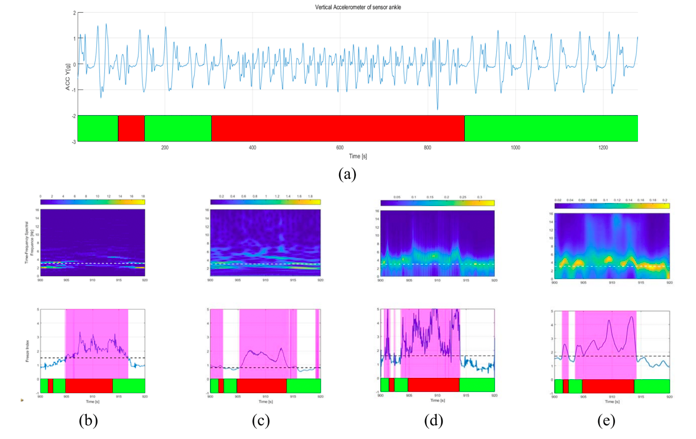Freezing of gait (FOG) is an episodic gait disturbance affecting locomotion in Parkinson’s disease. As a biomarker to detect FOG, the Freeze index (FI), which is defined as the ratio of the areas under power spectra in `freeze’ band and in `locomotion’ band, can negatively be affected by poor time and frequency resolution of time-frequency spectrum estimate when short-time Fourier transform (STFT) or Wavelet transform (WT) is used. In this study, a novel high-resolution parametric time-frequency spectral estimation method is proposed to improve the accuracy of FI. A time-varying autoregressive moving average model (TV-ARMA) is first identified where the time-varying parameters are estimated using an asymmetric basis function expansion method. The TV-ARMA model is then transformed into frequency domain to estimate the time-frequency spectrum and calculate the FI. Results evaluated on the Daphnet Freezing of Gait Dataset show that the new method improves the time and frequency resolutions of the time-frequency spectrum and the associate FI has better performance in the detection of FOG than its counterparts based on STFT and WT methods do. Moreover, FOGs can be predicted in advance of its occurrence in most cases using the new method.






